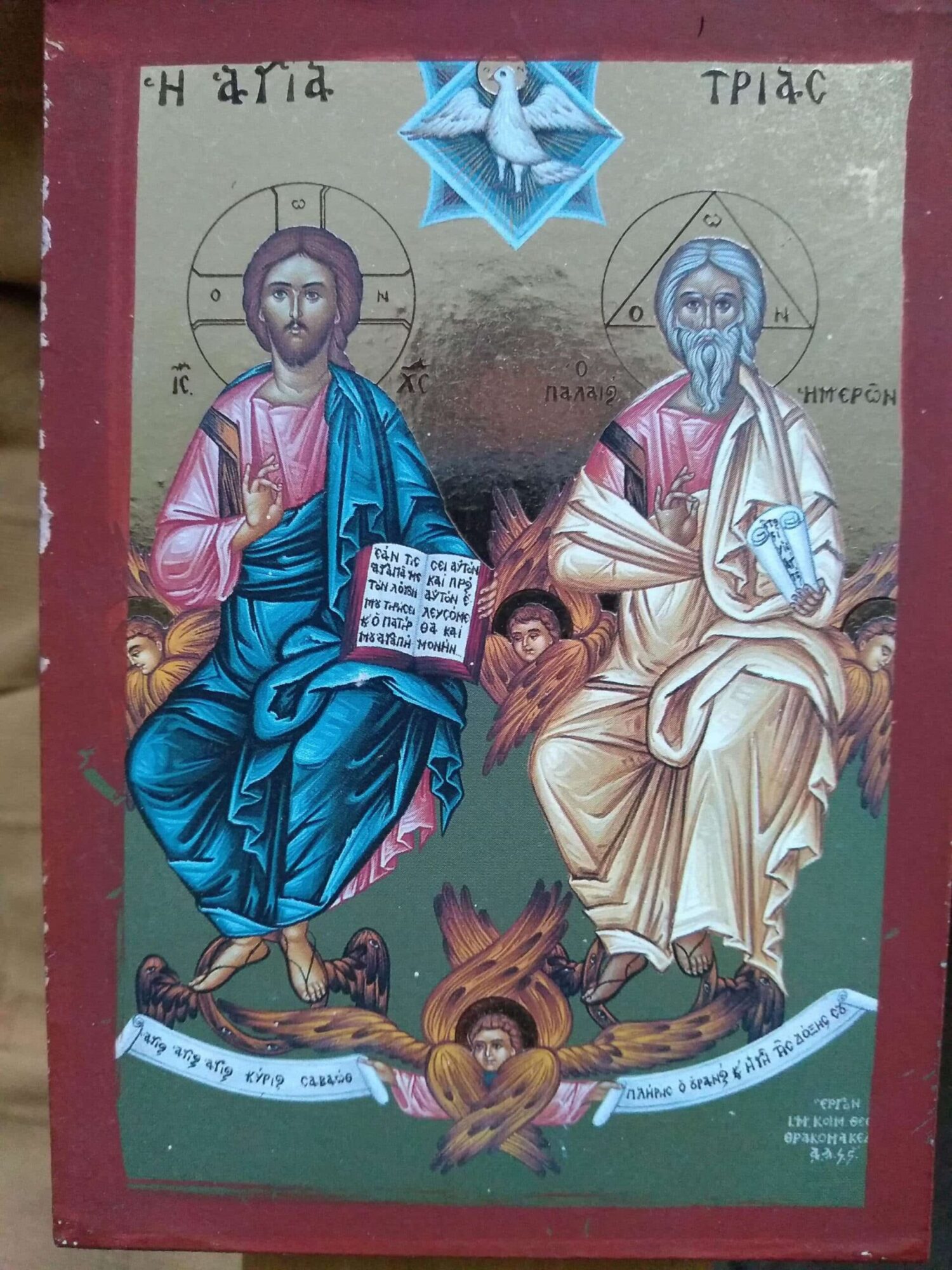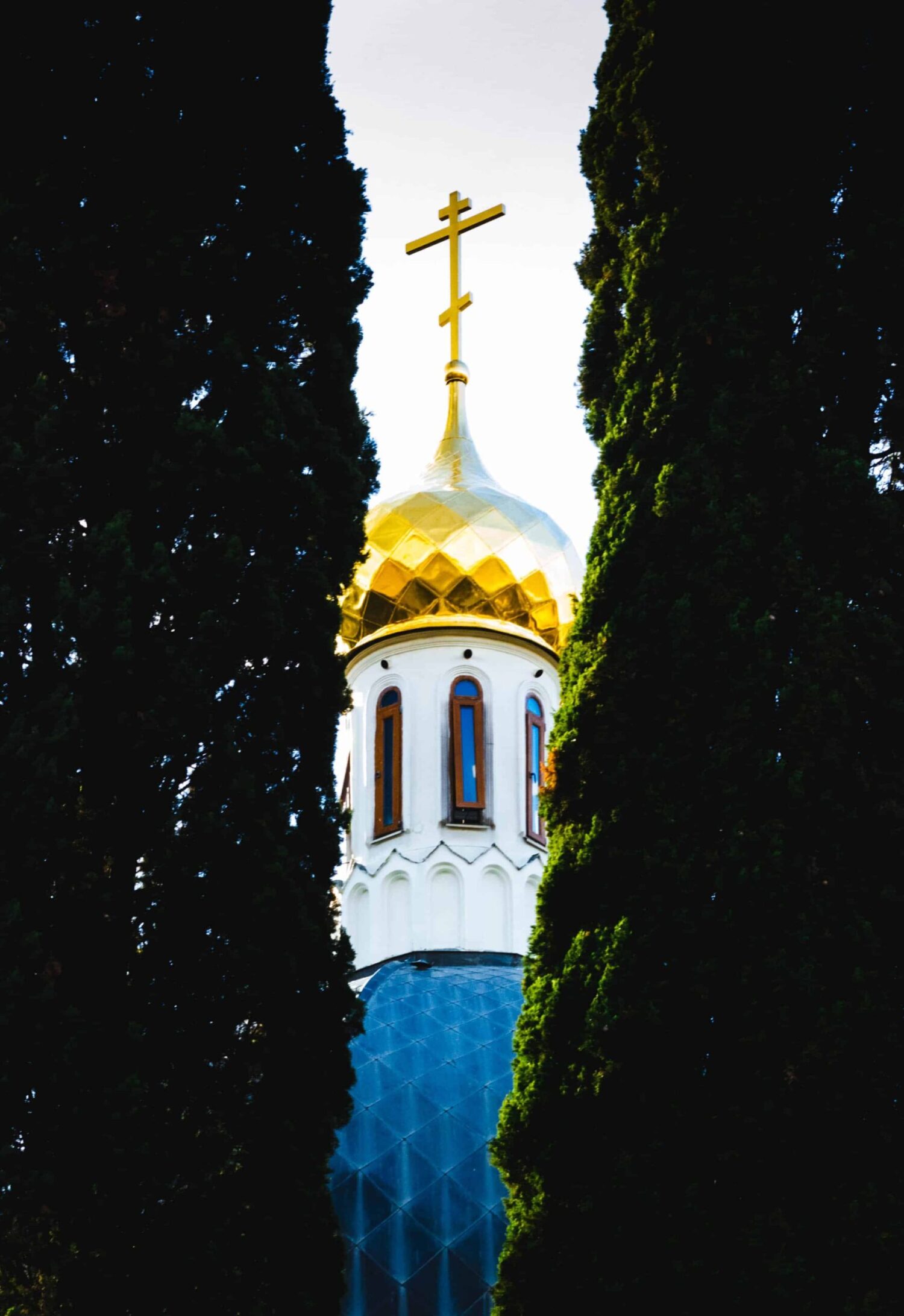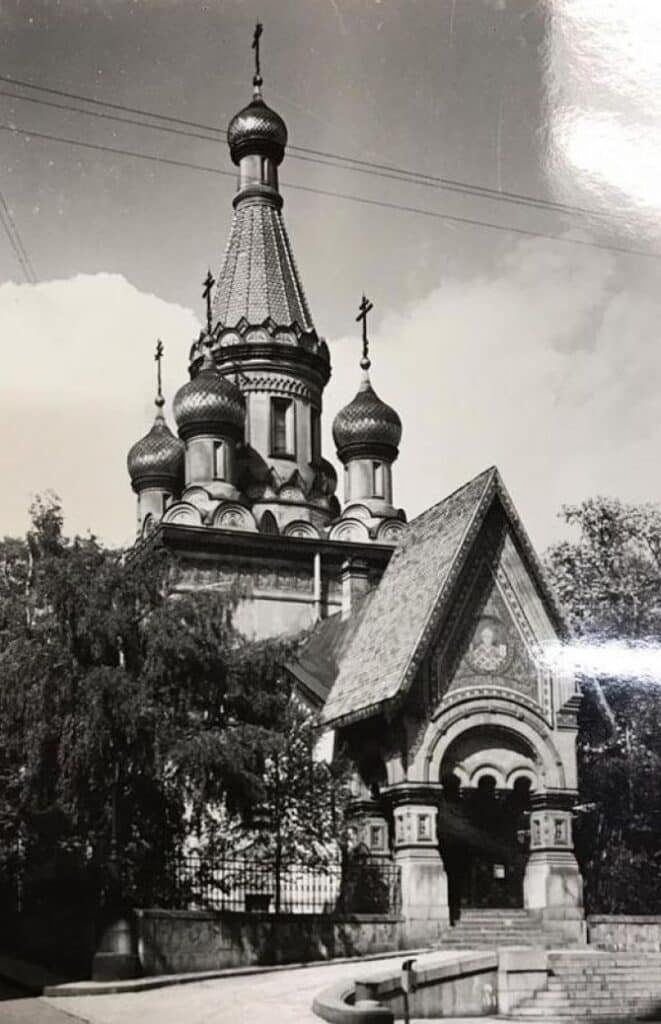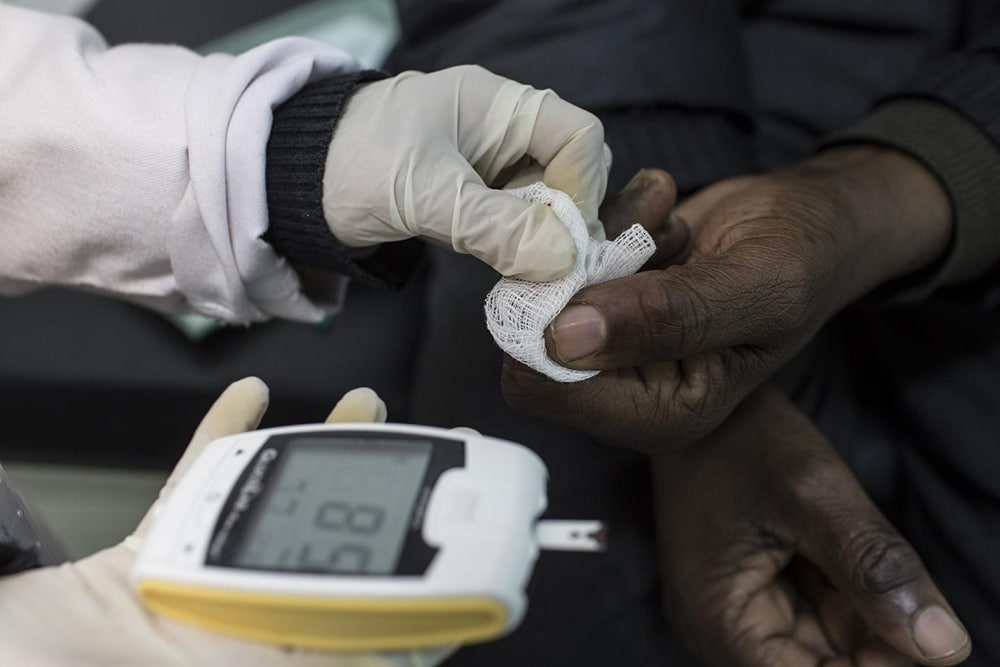The further life of man, as we have seen above, consists in the development of that seed of eternal life which is laid in baptism. A person is gradually cleansed from sin, gradually perfected and strengthened in goodness, and ascends to the perfect age of a husband. However, even then “the beginning of his life” (Isaac the Syrian), that “salt that keeps a person intact,” continues to be faith. “Faith is the mother of every good deed, and with it a person achieves the fulfillment on himself of the promise of the Lord and Savior of our Jesus Christ, according to what is written:” without faith it is impossible to please God “(Ephraim the Syrian). Even if a person happened to fall: let him only keep his faith – the broken harmony of his soul will be restored, his disparate forces will again be gathered and rush against sin with new energy. “Faith,” says St. I. Chrysostom, – there is a head and a root; if you keep it, then, even though you have lost everything, you will gain everything again with greater glory. “Faith is power for salvation and power for eternal life” (Clement of Alexandria).
On the other hand, it is clear what happens if faith is lost by a person. “Without oil the lamp cannot burn,” without the root every tree will wither. “Without Me,” said the Lord, “you can do nothing.” Once faith is taken away, every meaning of life and every power to do good is taken away. There is no center that would bind the efforts of a person and comprehend them. A person does not feel the closeness of God, he cannot understand His goodness, God again for him is only a punisher of untruth. Will such a person turn to God? And if he does not turn, then he cannot accept God’s help, His grace. So, having lost this “eye that enlightens every conscience” (Cyril of Jerusalem), his faith, a person loses all his spiritual property – and perishes. Remarkable in this regard are the features with which the Lord depicts the righteous and sinners at the last judgment. Meanwhile, how the righteous, who have kept their faith, marvel at the mercy of God: “When did you see thee hungry, and drink?” – For sinners, God’s sentence seems unfair: “when did I see you hungry, and not serve you?” God appears either as hostile to them, wanting, looking for an excuse to condemn them, to deprive them of eternal bliss. The first lived in faith, and therefore their whole soul is filled with a feeling of the undeserved mercy of God, and now they confess their unworthiness. The latter, however, have lost their faith, they do not recognize the mercy of God, they lived only for themselves, and therefore they are now rising to the defense of their “I”. The first in their faith always saw the way to God open to themselves, because they saw the mercy of God. Seeing this, they always aspired to God and were constantly in spiritual unity with Him: this unity, of course, becomes their lot even after leaving this life. The latter, having lost their faith, naturally also lost their strength for spiritual union with God, alienated themselves from God: therefore, even after their transition to the future world, they do not have the ability to surrender to God, their lot is in the gloomy realm of selfishness, which gnashes its teeth about its death. , not finding the strength to come to terms with this, even if, like a righteous man, in the thought that he suffered according to the will of God (Rom. 9:3).
So, faith revived a person, faith developed and educated him in spiritual life, faith will lead him to eternal bliss. By believing, a person accepted here the grace of God and could accept communion with God, despite the fact that until then he had lived in sin. The same faith in the love of God will enable a person to maintain this fellowship with God in the coming kingdom. “On the day of judgment,” says St. Neil of Sinai, “we ourselves will be our own accusers, convicted by our own conscience. Therefore, in this extreme case, will we find any other protection or help, except for one faith in the most philanthropic Lord Christ? This faith is our great defense, great help, security, and boldness, and an answer for those who have become unanswerable because of an inexpressible multitude of sins.”
Faith that saves is free and active
In order to avoid misunderstandings, it must be repeated here once again that the Orthodox Church, assuming in faith all the blessedness of man and considering faith as the cause of man’s spiritual growth, never imagines this faith in the form of some kind of self-acting force, which, as something extraneous, would almost force man to a virtuous life and to communion with God. Of course, a believing person perceives the grace of God, with which he goes to fight against sin. However, the instrument for receiving this grace is not the knowledge or contemplation of the mercy of God and His readiness to forgive and help, but certainly the free desire and decision of a person. In the same way, faith is “a worker of goodness, the basis of righteous conduct” only because it “is the free consent of the soul” (Clement of Alexandria). Faith only inspires the will of a person, but by no means frees him from efforts on himself. “You should not only believe in Christ,” said St. Macarius of Egypt, “but also suffer, according to what is written: “as it was given to you … not only believe in Christ, but also suffer for Him” (Phil. 1, 29 ) To believe only in God is characteristic of those who think earthly, even, I would not say, and unclean spirits who say: “We know Thee, who art the Son of God” (Mk. 1.24; Mt. 8.29)”. Faith requires the free choice of good and the decision to do it.
Not by its contemplative side, not as a state of perceiving, faith saves a person, so that a person can only inactively experience his salvation, Faith saves with its active side, the constant participation of good will in it (John 7:17). The believer in his faith finds the boldness to turn to God and, thus, enters into communion with God, accepts this communion. The believer, strengthened by the power of God, aspires to the life of a saint and thereby begins it. Faith in this sense is “the beginning of our hope and the beginning of Divine mercy towards us, like a door and a way” (Cyril of Alexandria).
Faith and deeds
In order to bring into view precisely this vital (and not formal) meaning of salvation, and precisely where it is necessary to protect itself from Protestant fabrications, our Church chooses from two formulas worked out in the West the one that ascribes salvation not to faith alone, but to faith with works. . “We believe,” says the 13th member of the Epistle of the Eastern Patriarchs, “that a person is justified not simply by faith alone (i.e., as will be seen later, not by its theoretical, perceptive side), but by faith, aided by love (faith, as active force, by the fact that it produces love), i.e. through faith and deeds “… “Not a ghost, – the fathers explain even more specifically, – only faith, but the faith that exists in us through deeds justifies us in Christ.” Thus, it is undoubtedly faith that justifies a person, but only real, true faith, that which leads a person to true life, makes him work out his salvation. The teaching of the Rev. Theophan that faith saves by deeds. “Salvation,” says the Saint, “from good deeds; but it is impossible to succeed in good deeds, as it should be, without faith. Faith inspires good deeds, faith points them out, faith also leads to obtaining strength for doing good deeds. Therefore, faith is an accomplice to good deeds. The main thing is deeds, and she is a benefit.” Salvation, therefore, lies in the fact that a person creates it himself, but he does not come to this creation except by faith.
The Orthodox should not understand this definition in the Catholic way, i.e. so that by deeds a man earns his salvation. Deeds in themselves, as outward acts or separate deeds, have no meaning in Christianity. Behavior is valued here only as an expression of the corresponding mood of the soul, a certain direction of the will, although, in turn, it influences the formation of this mood. The entire Conversation on the Mount is built on the thought of the insufficiency of one external good deed and the need for an internal change, which actually assimilates the Kingdom of Heaven to a person. Therefore, the mercy shown to a prophet or disciple is only appreciated when it is rendered “in the name of the prophet or disciple”, in the name of faith (Matthew 10:41-42). “If,” says St. Apostle Paul, “I give away all my possessions, and give my body to be burned, but I do not have love, it does not profit me at all” (1 Corinthians 13:3). You can’t look at the outside. The apostle explains in more detail: the essence of salvation is not in ascetic labors, as such, not in outward zeal; and exploits, and zeal should flow from a regenerated, changed soul; otherwise they are nothing before God (Rom. 4:2). Therefore, it may happen that two mites brought by a widow will outweigh the entire multitude of offerings from the rich, and a sinner-publican will be closer to God than a righteous Pharisee; those who come at the eleventh hour and do nothing will receive an equal reward with those who worked all day and endured the heat of the day. From a legal point of view, this cannot be explained: more work requires more rewards (unless we generally deny the possibility of any kindness on the part of a person). With the Orthodox, this does not require explanation: the Lord wants to save everyone equally and the whole aspires to everyone equally, but one has more aspiration for God, the ability to perceive His communion more, the other has less. In such a case, it may happen that the newly converted and who has done nothing will be equal or even higher in reward than the one who has grown old in faith and accomplished feats. The kingdom of God is not a reward for labors, but a mercy offered to the tun and assimilated according to the acceptability of each.
The question, therefore, is where the soul is directed, what it wants, how it lives. If its aspiration is towards God, if it does not live for itself, then it, in addition to its external deeds, is justified; this is the guarantee of future pardon, and deeds and labors are important only for the return and strengthening of this aspiration. “Recompense,” says St. Isaac the Syrian, “is no longer for virtue, and not for labor for its sake, but for humility born from them. If it is lost, then the former will be in vain.”
The soul is saved not from its external deeds, but because its inner being is renewed, that its heart is always with God. Of course, at the last judgment the book of everyone’s life will be opened, and everyone will give an answer for every deed and word, for every thought, no matter how insignificant and fleeting it may be: the perfect cannot be called imperfect. But this revelation of life for some will only be a source of humility, it will only lead them to the realization of the undeserved pardon, and will bind them even more closely to God; for others, the conviction of conscience at the judgment will bring despair, and finally tear them away from God and the Kingdom. “And these go into everlasting punishment, but the righteous into eternal life.” Whoever directed his soul where he goes, goes there.
Thus, in faith – all the blessedness of a Christian. Faith is not only the cause, the driving force in the spiritual development of man, it is rather the focus, the very heart of spiritual life. As faith grows, love grows, as love grows, faith grows: the moral development of a person finds both its expression and its fruit in the strengthening and growth of faith. Faith promotes deeds, and faith is perfected by deeds (James 2:22). Faith is truly the alpha and omega of moral life, just like the Lord Himself, Whom it reveals to man*. Leading to love, in which the essence of eternal life (1 John 3:14; John 17:26), faith thus gives a person the opportunity here on earth to begin eternal bliss. Upon passing into the next world, faith turns into knowledge, and love, which connected a person with God, continues into eternity.
Cf. © M. Novoselov. Salvation and faith according to Orthodox teaching. Religious and Philosophical Library. Issue. 31. Brotherhood of St. Alexia, 1995. Published according to the text of the 1913 edition.














